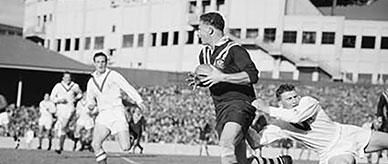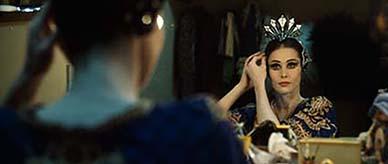


About this record
This photograph shows champion Australian Olympic swimmer Shane Gould climbing out of the Ryde Swimming Centre pool in Sydney's northern suburbs in 1971 at about 15 years of age. Gould is wearing a one-piece green nylon swimming costume, with the yellow badge of the Forbes and Ursula Carlile Training Squad sewn on the front.
Educational value
- Shane Gould (1956–) first gained international attention in world swimming in April and December 1971 when she equalled the world record in the women’s 100 metres freestyle, then broke world records in the 200 metres, 400 metres, 800 metres and 1,500 metres freestyle events. Gould became the first person, male or female, to hold world freestyle records simultaneously in all distances from 100 metres to 1500 metres and in the 200 metres individual medley.
- When this photograph was taken, Gould was training to represent Australia at the Summer Olympics due to start in August 1972 in Munich, in what was then West Germany. She is still the only woman to win five individual medals in swimming – three gold, one silver and one bronze – in the same Olympic Games, achieved when she was only 15 years of age. The gold medals in the 200 metres individual medley and the 200 metres and 400 metres freestyle were all won in world record time.
- Gould's success demonstrated both her talent as a swimmer and the results of her intensive training program, which she began from about the age of 13. By 1971, she was training for approximately 25 hours a week under coach Forbes Carlile (1921–) in sessions before and after school. In winter she used a heated indoor pool, but in summer she trained at the outdoor Ryde Swimming Centre, which would have contributed to the bleached condition of her hair in this picture.
- At the time of this photograph top swimmers were not professionals, and Gould herself was still a student at Turramurra High School. Gould's international success was not followed by any paid product endorsements or sponsorship deals such as those that could be expected today. Even when she was a world record holder, her parents were still paying the 20 cents entrance fee each time she used the Ryde Swimming Centre.
- Gould is pictured here wearing a nylon swimsuit (a common material and style at the time), made by the leading Australian manufacturer, Speedo. Today, most top swimmers wear swimsuits made from form-fitting fabrics, designed to enable the wearer to go faster. Gould is not wearing goggles or a cap. At the time, goggles were not worn during competitions, although Gould sometimes wore them while training. Caps were always worn in competitions.
- Gould was Australian of the Year in 1972 and has been designated by the National Trust as one of Australia's 'Living National Treasures'. Burdened by the pressure of public expectation, she retired from competitive swimming one year after the Munich Olympics. A couple of years later, Gould and her husband retreated to a Western Australian property. In recent years Gould has returned to swimming and participated in Masters events. She has continued to be involved in swimming through surfing, learn-to-swim and water safety projects, including some conducted in Fiji through the Shane Gould Swimming Foundation.
Acknowledgments
Learning resource text © Education Services Australia Limited and the National Archives of Australia 2010.
Related themes
Need help with your research?
Learn how to interpret primary sources, use our collection and more.


